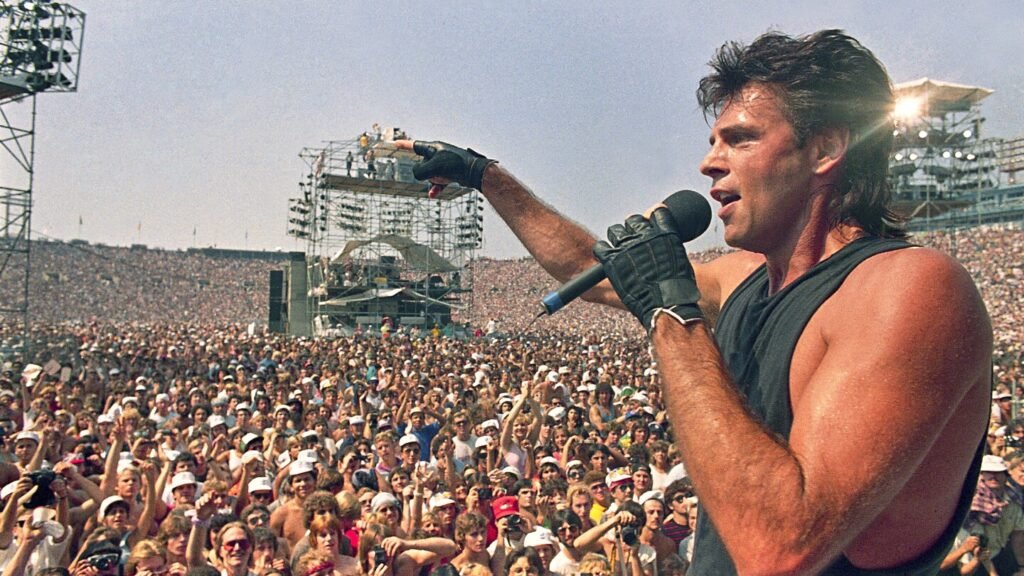NEW YORK (news agencies) — Forty years ago, the legendary Live Aid concerts aimed to do a lot of good — helping to raise over $100 million for famine relief in Ethiopia and inspiring worldwide awareness for a cause it might otherwise have ignored.
Simulcast from Philadelphia and London on July 13, 1985, Live Aid was the most ambitious global television event of its time: 16 hours of live music in two different continents featuring Queen, The Who, a Led Zeppelin reunion and more.
A lot has changed in the years since. “Live Aid, ’85 to now, is the same distance as the Second World War from Live Aid,” notes Rick Springfield, laughingly. “That’s how long ago it was.”
Artists who performed at Live Aid — Springfield, organizer Bob Geldof, Hall and Oates’ John Oates and Judas Priest’s Rob Halford — reflected on the event and its impact in interviews with media ahead of the 40th anniversary on Sunday.
Here’s what they had to say:
At John F. Kennedy Stadium in Philadelphia, Springfield performed between Run-DMC and REO Speedwagon — just a taste of the diversity of performers featured on the transnational lineup. “Run-DMC, I remember thinking, ‘What is this? Three guys talking over a record player. What is that? Little did I know that it was about to change the whole game,” he says, laughing. He remembers playing an electric set — no “Jessie’s Girl,” because “back then, it was just my first hit. … It hadn’t gone on to become this cultural thing.”
Hall and Oates’ John Oates had a different experience. His band also played in Philly — their hometown — and in 1985, his band was one of the biggest on the planet. They played near the end of the night, joined by the Temptations’ Eddie Kendricks and David Ruffin and remained on stage to back the Rolling Stones’ dynamic frontman Mick Jagger. The British rockstar had a trick up his sleeve.
“He didn’t tell us that he was bringing Tina Turner out,” Oates says. “We had rehearsed a certain amount of songs with him. But then when he brought her out, it just jacked up the level of energy like you can’t believe.”
Judas Priest singer Rob Halford counts “Mike and Tina, of course,” as one of his Philly Live Aid highlights. “Led Zeppelin, too.”
But most exciting of all for the heavy metal frontman? Meeting folk hero Joan Baez. The band had previously covered her classic “Diamonds and Rust.”
“I thought, ‘Oh my God, she’s gonna come and kick me in the ass for wrecking her beautiful song,’” he recalls. “She gives me a quick hug and goes, ‘The reason I’m here is because my son said to me, if you see Rob Halford from Judas Priest at the Live Aid Show in Philadelphia, will you tell him from me that I prefer Judas Priest’s version to my mom’s version?’ … It was a display of such kindness.”
Twenty years after Live Aid, Geldof organized Live 8 — an even larger undertaking in the new internet era, with 10 concerts happening simultaneously and across the globe.
If the trend were to continue, there should be another event taking place this year. Notably, there isn’t.
Geldof says that’s because there couldn’t be a Live Aid-type event in 2025. He cites social media as a cause. In his view, algorithmic fracturing has made it impossible to create monolithic musical and activistic moments. Instead, he views the current media landscape as bolstering “an echo chamber of your own prejudices.”
For something like Live Aid to work, “You need rock ‘n’ roll as a creature of a social, economic and technological movement,” he says. “And I think the rock ‘n’ roll age is over. … It did determine how young people articulated change and the desire for it. … That isn’t the case anymore.”
